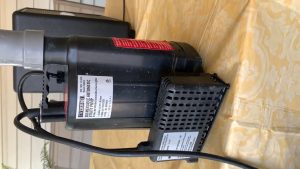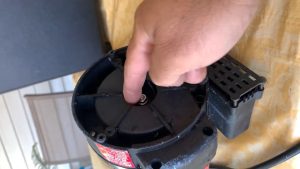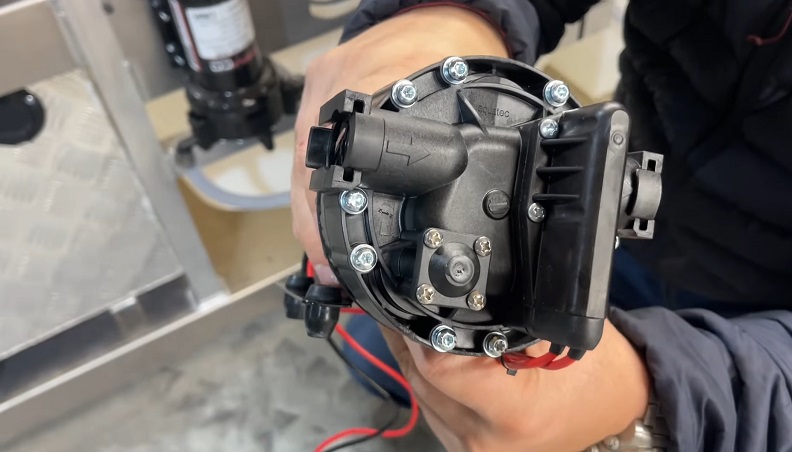The portable water pump is an excellent water-transferring device. Most of the people have high-quality water pumps at their home. These pumps work like magic. Turn on the switch and get work done within minutes. Usually, these active pumps have a powerful motor and run on electricity or battery.
After running for months, these home water pumps may start showing problems. These can be internal as well as external. Frequent failure of these machines makes the result awful. You may even need to spend a lot of time or money if you can’t find the problem. So, finding the issues and solving them properly is essential. We have done the task for you!
Some Common Portable Water Pump Problems and Solutions:

Problem: Low suction or flow rate of portable water pump
Appearance: It’s a common problem using a small portable water pump. This problem happens when watering or transferring water from one place to another. You will start getting reduced or lower water flow. It stands for the late downtime for the crew, more expenses, and reduced longevity.
Causes:
- Low suction or flow rate happens due to several reasons. You may have installed the affordable water pump too far from the source.
- The uses of a smaller hose or line than expected.
- Water full of debris is also a reason behind this.
- You haven’t correctly connected the motor.
Solutions:
- You should try to install the transfer water pump within a minimum of 20 feet from the water source. It depends on how high you install it. Sometimes short duration may also cause a low rate of water flow.
- You should try to Use the recommended intake line. Make sure there are no kinks between the source and the pump. Using a non-collapsible hose can be a good idea.
- Clean the intake filter at a time if you use water pumps in dirty water or water having particles.
- Make sure you or the technician has installed every part of the pump properly. Replace any component if needed.
Problem: The mounting surface of the portable water pump
Appearance: There will be seepage, drips, and ample coolant bleed marks. These marks are visible on or around the mounting spot or on the housing
Causes:
- You may haven’t installed the device exactly as it should be.
- The incorrect application of seals, gaskets, or sealant.
Solutions:
- If you have set up a new portable water pump for the house, remove the pump first. Then check and re-install it. Follow the torque specs properly.
- Check if the seals or gasket are in the right shape. During the prescription of sealant, clean all the rims, and mounting surfaces. Then apply the new sealant on the spot correctly.
- If the leakage is not the reason, change the whole pump immediately.
Problem: The presence of rust and corrosion in the portable water pump
Appearance: There will be rust and corrosion marks on the pump body. As an example: coolant won’t move right if there is corrosion in the impeller fins.
Causes:
- Coolant is contaminated.
- You have installed coolant incompatible with the top-quality portable water pump.
- Coolant contains a mixture of versatile chemistries.
- The defective pressure cap is causing air bubbles may lead to rust.
Solutions:
- You need to replace the residential water pump.
- Flush the pump’s cooling system first, then install the pump.
- Refill or start using the compatible coolant containing the correct chemistries.
- Change the pressure cap if it has errors.
Problem: Unnecessary deposit buildups of the portable water pump
Appearance: Deposit buildups cause a pump to work inefficiently. There will be sludge, scale, and deposits inside the lightweight water pump. These things may clog the machine and damage any specific part of it.
Causes:
- Coolant is contaminated.
- You have installed coolant incompatible with the top-quality portable water pump.
- Coolant contains a mixture of versatile chemistries.
Solutions:
- You need to replace the residential water pump.
- Flush the pump’s cooling system first, then install the pump.
- Refill or start using the compatible coolant containing the correct chemistries.
Problem: Portable water pump cavitation
Appearance: Air bubbles or cavities in the pump’s coolant collapse, including explosive force. There can be pockmarks in any individual part of the device.
Causes:
- The buildup of air bubbles at the coolant inlet.
- Increased pressure in the system is causing bubbles to implode and damage the pump.
Solutions:
- You need to replace the residential water pump.
- Flush the pump’s cooling system first, then install the pump.
- Refill or start using the compatible coolant containing the correct chemistries.

Problem: Bearing damages
Appearance: Turn off the engine. Look for the condition of the bearing by observing from each side-to-side play at the shaft. Then give sufficient pressure; no play will happen. Even, you may hear rumbling or screeching noises coming out of the 12V water pump.
Causes:
- You may have misaligned the belt, which is causing excessive wear.
- The belt has over-tension, which may cause bearing overload.
- There may be a damaged mechanical seal. It enables coolant to leak through bearings and then wash away the lubricator.
Solutions:
- Replace your water pump soon.
- Check the belt drive system alignment.
Problem: Damaged or broken shaft
Appearance: The pump shaft is broken or somehow bent. Sudden overload or imbalance causes instantaneous damage. If you see the different colors of the shaft, the shaft breaks gradually. It will indicate that the shaft created massive heat buildup before it was broken.
Causes:
- You may have misaligned the belt, which is causing excessive wear.
- The belt has over tension, which may cause a bent shaft or earlier shaft damage.
- Improper maintenance causes more vibrations.
Solutions:
- Replace your water pump soon.
- Check the belt drive system alignment.
- Check if the fan is mounted squarely on the shaft.
- Install a new fan if the previous one has a defective clutch.
Conclusion
These problems mentioned above are most common in running top-rated portable water pumps. You should troubleshoot the transfer water pump well after checking the reasons or ways how it is damaged. Try to avoid installing previously used or old water pumps. Bring a new replacement if repairing becomes unsuccessful.
We recommend you to do these mentioned solutions first. Indeed, these are the possible causes and solutions for portable water pump troubleshooting.

